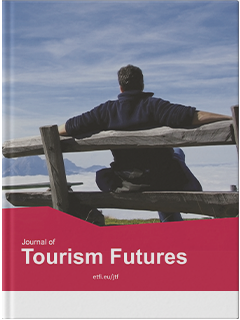Risk and ambiguity of COVID-19 inhibit intentions for post-pandemic travel via reduced valuation of tourism
IF 6.6
Q1 HOSPITALITY, LEISURE, SPORT & TOURISM
引用次数: 0
Abstract
PurposeThis study aims to examine how the initial ambiguity of COVID-19 contributed to tourists' intentions for visiting a once-viral outbreak site in the future.Design/methodology/approachThe present study (N = 248) used partial least-squares structural equation modeling (PLS-SEM) to examine whether perceptions of ambiguity and mismanagement of COVID-19 are indirectly related to intentions to travel to Wuhan in a post-pandemic world through perceptions of risk and tourism value. Further, whether the model effects differed as a function of individual safety orientation was examined.FindingsPerceptions of COVID-19 risk and tourism value serially mediated the effects of perceived COVID-19 ambiguity on post-pandemic travel intentions. Safety orientation did not moderate any paths. Perceived risk was a negative direct correlate of post-pandemic travel intentions.Originality/valueThe current study's strength is rooted in its specific targeting of post-pandemic travel intentions to Wuhan—the first city to experience a widescale outbreak of COVID-19 and subsequent international stigma—compared to general travel inclinations.新冠肺炎的风险和模糊性通过降低旅游估值抑制了疫情后旅行的意图
目的本研究旨在研究COVID-19最初的模糊性如何影响游客未来访问曾经爆发病毒的地点的意愿。本研究(N = 248)使用偏最小二乘结构方程模型(PLS-SEM)来研究对COVID-19的模糊性和管理不善的看法是否与通过对风险和旅游价值的看法在大流行后的世界中前往武汉的意图间接相关。此外,我们还检验了模型效应是否随个体安全取向的不同而不同。对COVID-19风险和旅游价值的感知依次介导了COVID-19模糊感知对大流行后旅行意愿的影响。安全取向没有调节任何路径。感知风险与大流行后的旅行意图呈负相关。与一般旅行倾向相比,当前研究的优势在于,它针对大流行后前往武汉的旅行意愿进行了具体定位。武汉是第一个经历COVID-19大规模爆发并随后受到国际谴责的城市。
本文章由计算机程序翻译,如有差异,请以英文原文为准。
求助全文
约1分钟内获得全文
求助全文
来源期刊

Journal of Tourism Futures
HOSPITALITY, LEISURE, SPORT & TOURISM-
CiteScore
15.70
自引率
6.00%
发文量
64
审稿时长
34 weeks
期刊介绍:
 求助内容:
求助内容: 应助结果提醒方式:
应助结果提醒方式:


